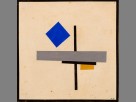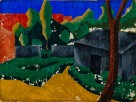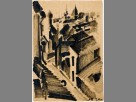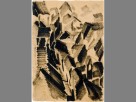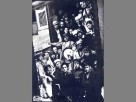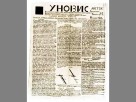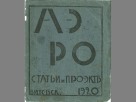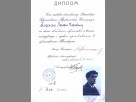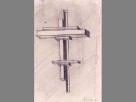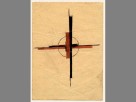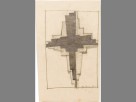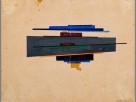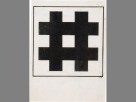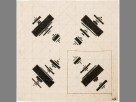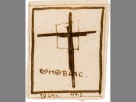Lazar Khidekel at the Centre Pompidou, Paris
Event Venue:
Centre Pompidou, ParisEvent Date:
March 28 - July 16, 2018Centre Pompidou, Paris: March 28 - July 16, 2018 | The Jewish Museum, New York: September 14, 2018 - January 6, 2019
The Lazar Khidekel Society is proud to announce that early works by Lazar Khidekel, as well as the manifesto AERO (1920) and a number of UNOVIS publications, including articles and photographs drawn from The Lazar Khidekel Archives and Collection, will be on view at the Centre Pompidou as part of the ground-breaking exhibition, “Chagall, Lissitzky, Malevich. The Russian avant-garde in Vitebsk (1918-1922)”.
The Center Pompidou exhibition of the Russian avant-garde from 1918 to 1922 focuses on the work of three of its emblematic figures: Marc Chagall, El Lissitzky, and Kasimir Malevich. The exhibition also presents the work of teachers and students of the Vitebsk School, created in 1918 by Chagall: Vera Ermolaeva, Lazar Khidekel, Nikolai Suetin, Ilya Chashnik and David Yakerson.
Through an unprecedented collection of two hundred and fifty works and documents, this event illuminates for the first time the post-revolutionary years when, far from the Russian metropolises, the history of art was written in Vitebsk.
Lazar Khidekel was one of the leading figures in the students’ collective of the Vitebsk Art School. His first teacher, Marc Chagall, who personally admitted Lazar to the school, counted him as among the most talented painters in his studio. With Chagall’s encouragement, the fifteen-year-old Khidekel—who attended art school for less than a year—was exhibited alongside the luminaries of modern art, including Chagall, Vassily Kandinsky, and Kazimir Malevich at the famous Vitebsk Exhibition of Local and Moscow Artists in 1919.
Lazar Khidekel was a founding member of the UNOVIS collective (Affirmers of the New Art) in Vitebsk, as well as the chief of its creative committee and the most prolific contributor to UNOVIS publications.
Although a few other members of UNOVIS organically absorbed the Suprematist system, most never managed to cross the threshold of abstraction in the way Khidekel did. Khidekel went on to become, in the words of his friend and fellow member of UNOVIS, Ilya Chashnik, the only truly “revolutionary Suprematist.” As stated in his completed UNOVIS questionnaire, Khidekel studied with Malevich himself—the only student in Malevich’s Dynamic Studio.From the Chagallian metaphorical ascent over side streets familiar from childhood, he was already within arm’s length of the systematized flights into the endless limits of Suprematist space. Malevich’s destruction of Renaissance perspective and the horizon line led to the revelation of another space—that of the boundless cosmos, which became the plane onto which Lazar Khidekel would project his Suprematist compositions. Here, between sky and earth, having overcome gravity, geometricized structures were formed in weightlessness. Before becoming the volumes of futuristic cities above the Earth, these structures drifted into the status of space stations of earthlings.
It is this trajectory of Suprematist development into the cosmos and subsequent return to Earth, with a stop in the aerial city of the future, that determined the artistic and architectural development of Khidekel's Suprematism. Starting with his collaboration with El Lissitzky on the transition from planar to three-dimensional Suprematism, Khidekel became not just the first but indeed the only Suprematist architect. In his view, avant-garde architecture was derived from that modern pictorial system. For Khidekel, Suprematism was a living organism able to develop many branches, including architecture and design, ultimately and infinitely changing the visual image of the world. He believed that the initial artistic vision and form of an architectural structure determined its function, a belief that governed his own work as well as his teachings of generations of architects.
“Khidekel explored a new vocabulary, a new vision of space, form, texture and colour and shared with his contemporary avant-garde artists one basic concept – that art is a process, not a result. Khidekel, together with Kazimir Malevich, El Lissitzky, Ilia Chashnik, Nikolai Suetin and Nina Kogan, rejected the notion of the finite order, beginning and end, and regarded art as part of a continuum stressing the ‘superterrestrial’ impulse of suprematism. He designed many visionary buildings including a futurist city on stilts throughout the 1920s and with his architectural and design work helped to advance suprematism from its pure to its applied, utilitarian phase...” (Maria Kokkori)
For our friends in New York, we also have good news – the exhibition is coming to the New York Jewish Museum, and will on view from September 14, 2018 to January 6, 2019.
